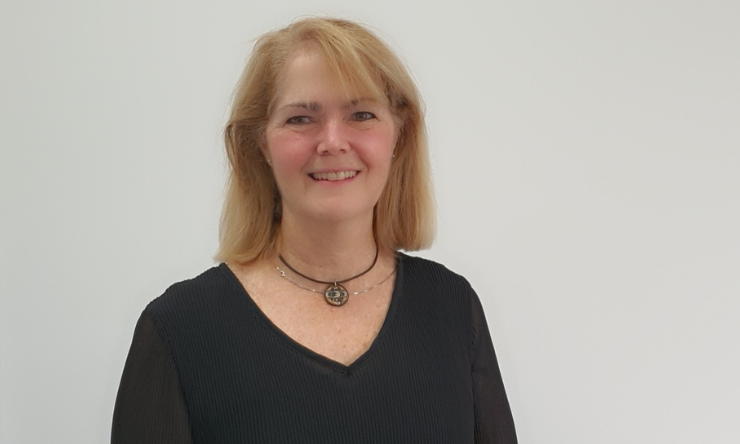Share
This World Glaucoma Week (10–16 March 2024), Glaucoma Australia is urging all Australians to have their eyes checked, as well as reminding those with a glaucoma diagnosis to adhere to their treatment to slow its progression and save precious sight.

Glaucoma is a leading cause of preventable blindness worldwide. It is estimated that over 300,000 Australians have glaucoma, yet 50% of people are unaware they have it and assume they have healthy eyes. While vision loss due to glaucoma can’t be restored, early diagnosis and treatment can delay or halt the progression of the disease. This is why early detection is key. Unfortunately, poor adherence to glaucoma treatment also poses a significant challenge.
A 2021 study revealed nonadherence with glaucoma treatment can be as high as 60%1. Treatment is key to slowing or halting glaucoma’s progression, which is why Glaucoma Australia’s SiGHTWiSE Program provides free education, guidance and support for people living with glaucoma so they can understand the impact of adhering to medications and follow-up appointments.
Glaucoma Australia CEO Richard Wylie said, “Australians still need to know more about glaucoma because for most people, diagnosis is a shock. Our SiGHTWiSE Program provides critical guidance for glaucoma patients throughout their treatment journey, with one-on-one emotional and practical support delivered by qualified orthoptist educators and trained health counsellors. The SiGHTWiSE Program helps patients manage the anxiety of receiving a glaucoma diagnosis and supports them with their ongoing challenges.”
A recent Patient Impact Measurement Survey (July 2023) completed by 1,319 patients looked at the effectiveness of Glaucoma Australia’s SiGHTWiSE Program and found that 84% of patients who take part in the program adhere to their prescribed treatments, and 91% of patients in the program attend their recommended appointments2– both important indicators for management success.
When father-of-two and Boss Energy CEO Duncan Craib was told he had lost peripheral vision due to glaucoma he was completely shocked – and upset with himself for not having booked an eye check sooner.
“The frustrating thing is, I had undergone a comprehensive Medicare-funded 45–49 years health check, and other than a question of whether there was family history of eye disease, there was no specific eye pressure or sight check. I think this is something that needs to be added to this key health review, especially if one has not properly been informed of their family health history.”
At the time of Duncan’s diagnosis his eye pressure was high for someone of his age. Aged 48 at the time, had Duncan not come in for his appointment, there was a real possibility he could have been blind within three months. Now, Duncan administers drops twice a day in both eyes to manage the disease, but there is a possibility surgery will be required down the track.
Anyone can develop glaucoma, but the incidence increases with age. About 1 in 10,000 babies are born with glaucoma; by age 40, about 1 in 200 people will be diagnosed with the disease, rising to 1 in 8 at age 80. Glaucoma is hereditary in most cases, and you are 10 times more likely to have glaucoma if you have a direct family member with glaucoma. First-degree relatives of a person with glaucoma have an almost 1 in 4 chance of developing glaucoma in their lifetime, and that risk increases to 56% if their glaucoma is advanced, so finding out your family history of the disease is critical.
“Understanding your family health history is key to appreciating the urgency of having an eye test. The next hurdle can be securing an appointment, especially for those accessing the public hospital system which is under enormous pressure with long waiting lists. Our SiGHTWiSE Program offers key support during that time ensuring patients are visiting their referring optometrist for progression testing, and should there be changes we can advise patients on the best course of action with the view to securing earlier intervention,” Richard Wylie explained.
Adherence to treatments remains an ongoing issue. Unfortunately, 50% of people diagnosed with glaucoma stop taking their medications within six months3, and persistence with initial glaucoma medication is as low as 33%– 39% at one year4. There are many factors that impact compliance, such as difficulty in applying drops, which is often the case for glaucoma patients with Parkinson’s; a history of depression; poor memory, which might be result of a dementia diagnosis; or simply low self-reported motivation.
“Recognising these risk factors, especially for those with a history of mental health problems, can help to identify and potentially overcome compliance barriers. Our vision is to have the SiGHTWiSE program operating within hospitals to provide patient education and support at diagnosis to improve treatment adherence from the outset, because better adherence is directly linked to a better prognosis in glaucoma, and most importantly, quality of life,” adds Richard Wylie.
Glaucoma Australia ambassador Kirk Pengilly is a key advocate for adhering to glaucoma treatment and management. With no family history of glaucoma, his diagnosis was a shock and has been a key motivator in ensuring he doesn’t miss his regular eye check-ups.
“An eye test is quick and painless and could be the difference between losing your vision, or not. Just as you go to the dentist or doctor for a check-up, you need to put an eye exam on your things-to-do list – particularly those over 50, like me. Use this World Glaucoma Week as a cue to book your eye test,” Kirk Pengilly said.
Glaucoma Australia recommends visiting an eye health professional every two years for a comprehensive eye exam for those aged 50 and over, and if you have a family history of glaucoma, get your eyes checked every two years from the age of 40. Book your eye check this World Glaucoma Week (10–16 March 2024). Early detection and treatment can save sight.
References:
- Guven S, Koylu MT, Mumcuoglu T. Adherence to glaucoma medication, illness perceptions, and beliefs about glaucoma: Attitudinal perspectives among Turkish population. Eur J Ophthalmol 2021; 31: 469-476.
- Glaucoma Australia Patient Impact Measurement Survey 2023
- Bansal R., Tsai J. Compliance/Adherence to Glaucoma Medications—A Challenge. J. Curr. Glaucoma Pract. 2007;1:22–25. doi: 10.5005/jp-journals-10008-1052
- Adherence and persistence with glaucoma therapy. Schwartz GF, Quigley HA Surv Ophthalmol. 2008 Nov; 53 Suppl1():S57-68.
For more information, please contact:
Jane Morey | Morey Media | Ph. 02 9436 2111 | Mob. 0416 097 678 | Email: jane@moreymedia.com.au


